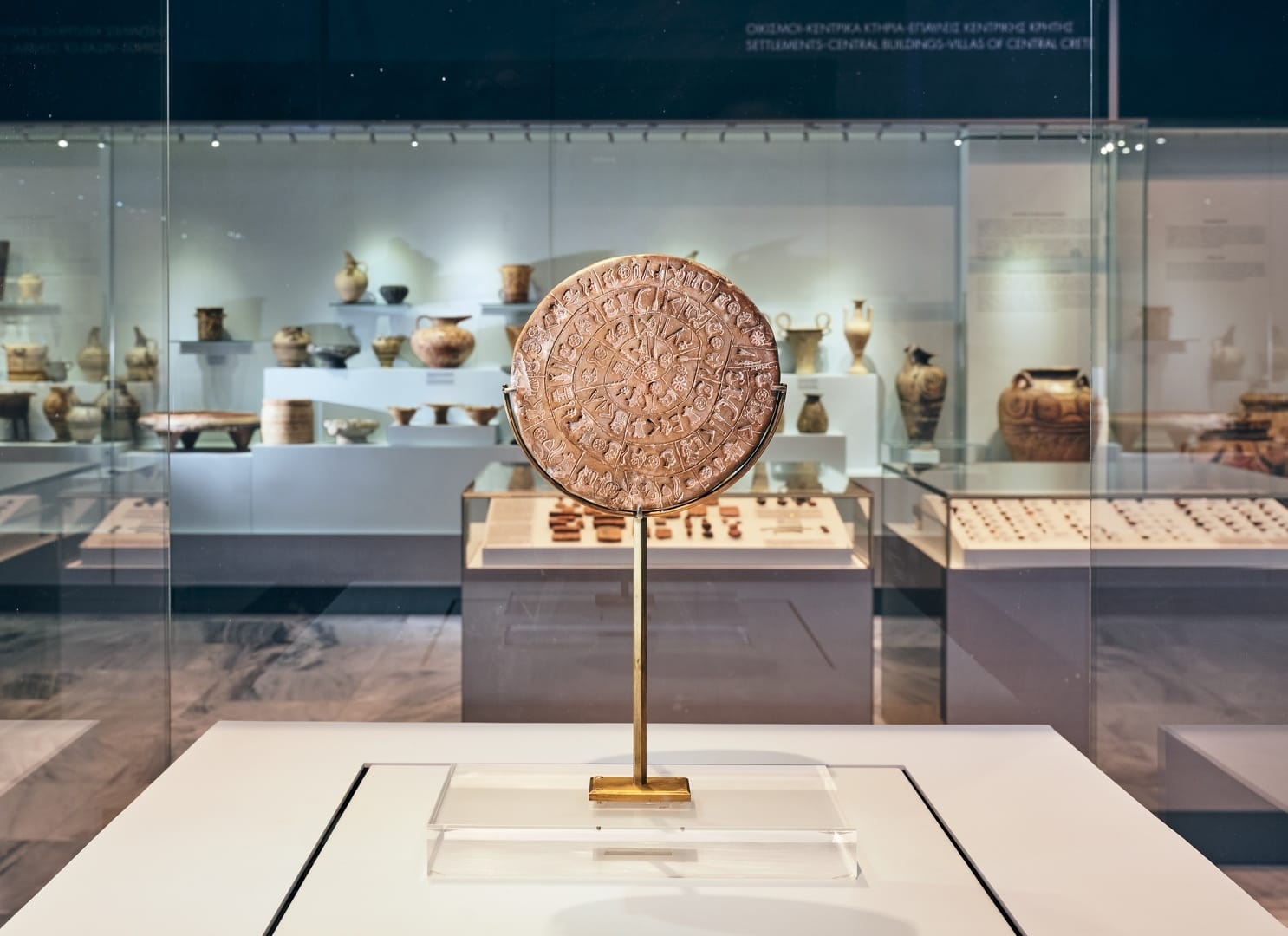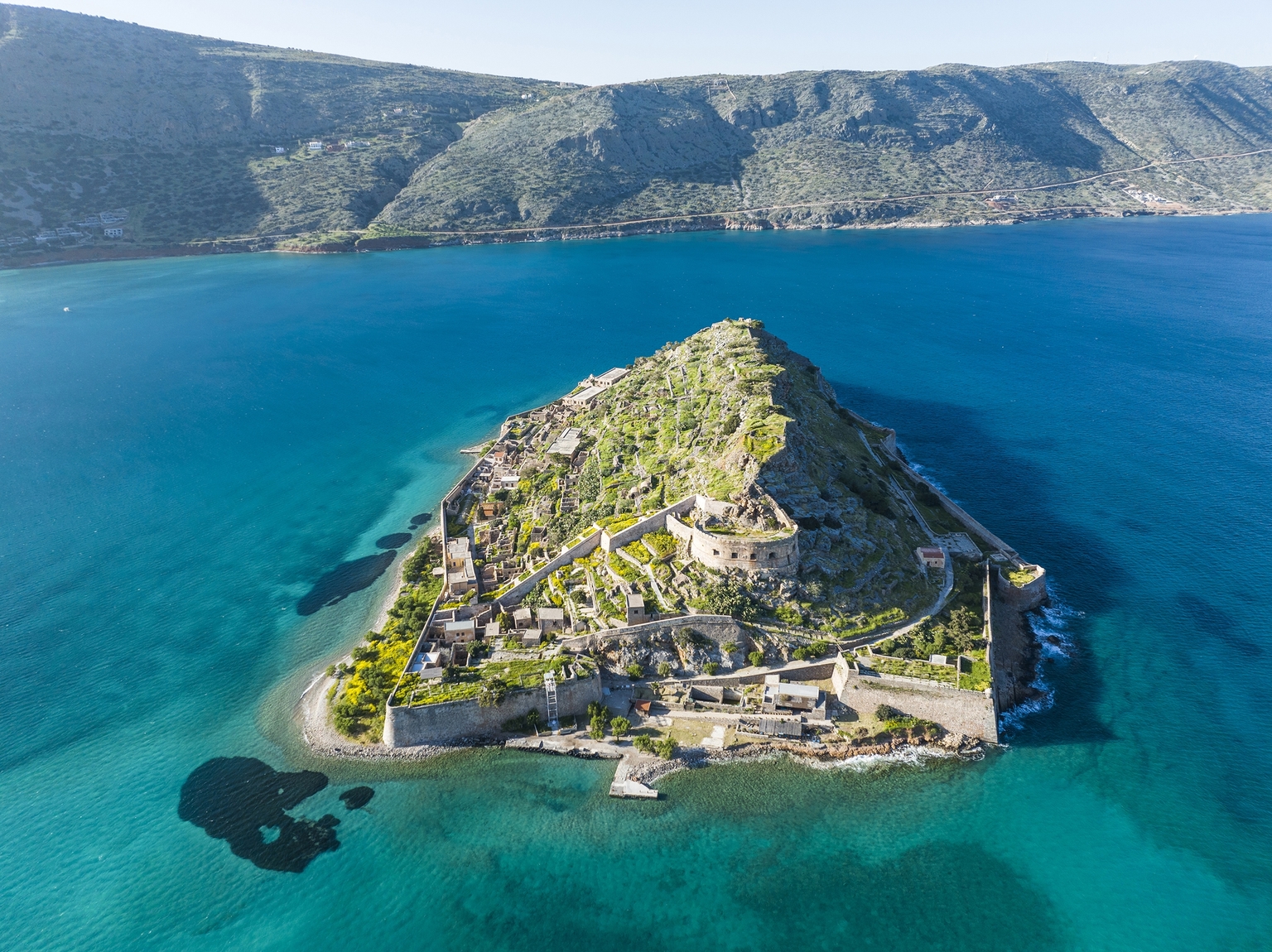Minoan Crete: The first region in Europe to develop and use a writing system
Author Discover Crete
Culture
Culture

The Phaistos Disc
The Phaistos disc is an artefact that was discovered in the Palace of Phaistos and which dates back to approximately 1700 BC. It is the most well-known remnant of a Minoan inscription. It consists of a clay disc, approximately 16 cm in diameter and 1 cm thick, which bears writing symbols on both sides and is to be read in a spiralling motion, beginning from the outside towards the centre of the disc.
The writing symbols on the disc are 252 in total, among which 45 are distinct signs. They are therefore considered too many to constitute an alphabet and too little to form a definite hieroglyphic writing system, as is for example the Chinese language. The language on the disc is considered to be unknown and for this reason the script remains entirely elusive to this day.
Minoan Linear A
Linear A is a writing system, at first used simultaneously with, as well as after, the Cretan Hieroglyphic writing system (1800 to 1450 BC). The archaeologist Arthur Evans named it after its signs which were more «linear», in comparison to the Cretan hieroglyphic writing system. It was mainly found on clay signs and seals, as well as certain types of pots and metal objects.
It refers to a syllabic system of writing which signifies that each individual sign constitutes a syllable and its sound values are in many cases comparable to the ones of the Linear B writing system. Nevertheless, the language of the Linear A writing system is unknown and attempts to decipher it have yet to be successful.
Mycenaean Linear B
The coming of Greek Mycenaeans from mainland Greece to Crete was accompanied with, among other things, the adjustment of the Minoan writhing system -Linear A- to the Greek language, leading to the development of the Linear B writing system (1400 to 1200 BC). The Linear B writing system was deciphered in 1952 by the British architect Michael Ventris, who proved that the reported language was the Greek language. This new development paved the way for the further placement of the Greek language in history, and more specifically almost seven centuries prior to past assumptions, making it, along with the Chinese language, one of the first two recorded languages in the world, continually spoken without any interruption to this day.
The Linear B writing system was originally found on clay signs in Knossos but inscriptions were later discovered in other parts of the Mycenaean civilisation, such as mainland Greece. These signs bear testament to a well-organised bureaucratic system, mainly consisting of records and accounts of harvesting, produce, raising animals and offerings to the gods. Through these findings we can determine that the leader was called «anax» (ancient Greek word meaning tribal chief, lord or leader), and there were coppersmiths, weavers, tanners, soldiers, artisans, shepherds and slaves in the community. We learn about chariots, oil, scented plants, honey, wine and the many flocks of sheep. We also gather information concerning religion, with the mentions of Zeus, Dionysus, Demeter and other deities prevalent in Ancient Greece.
Source: Region of Crete
Art & Culture



















